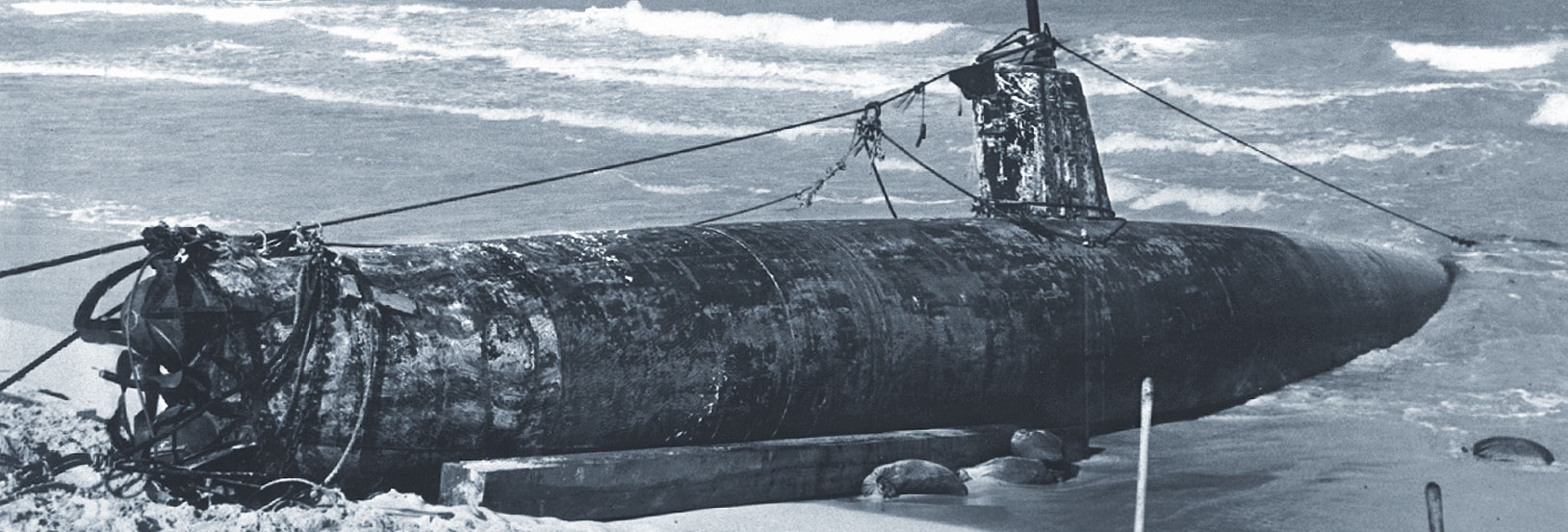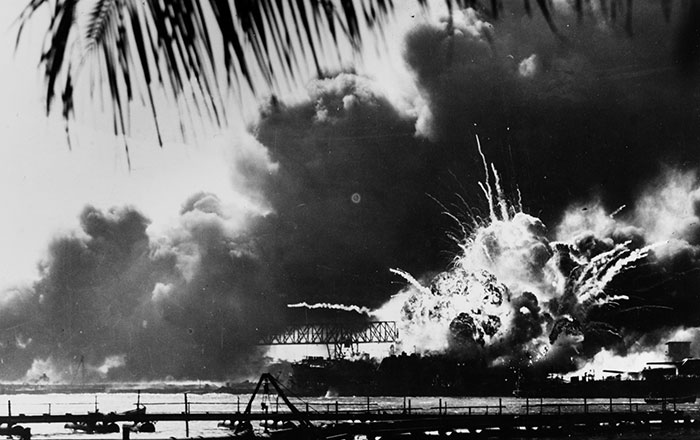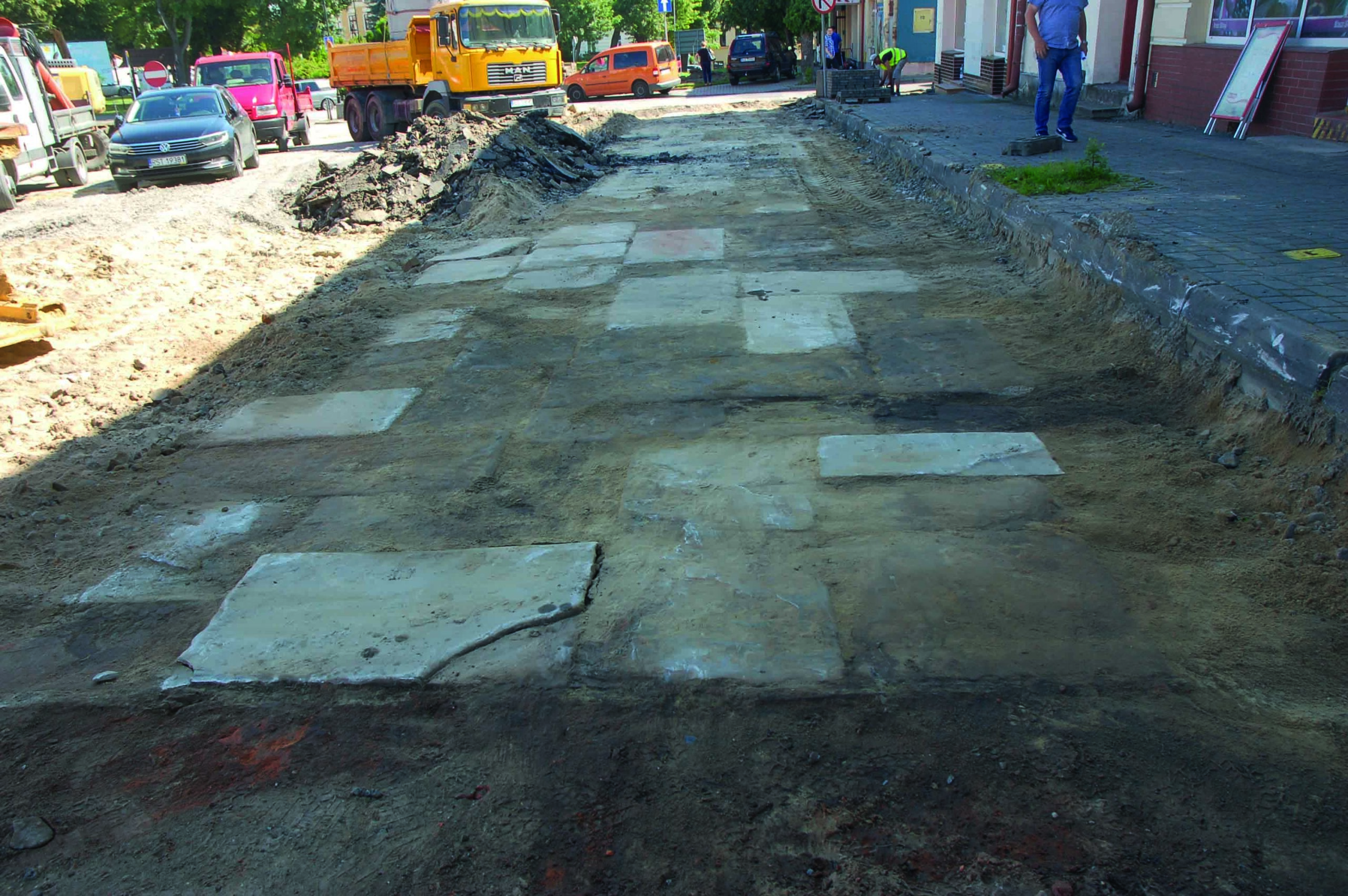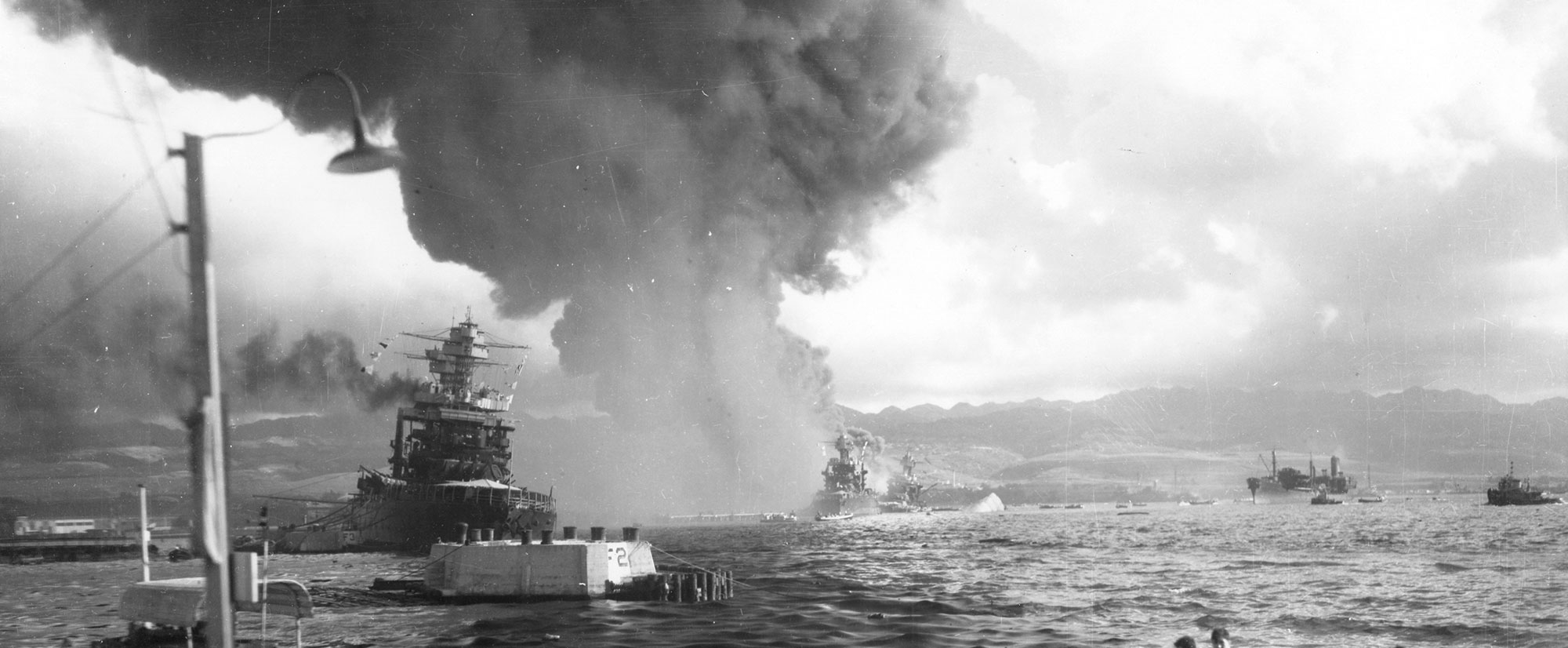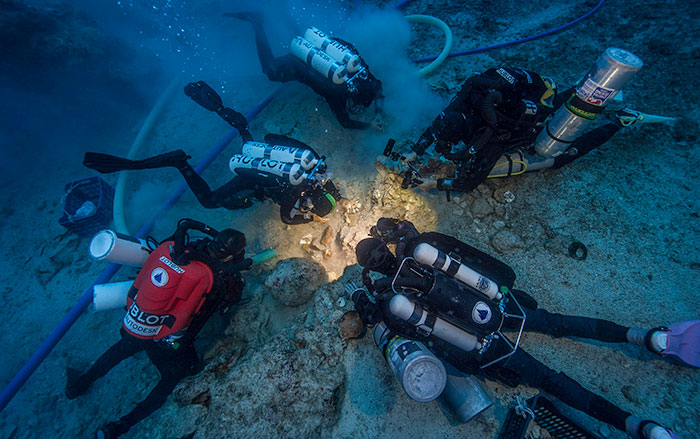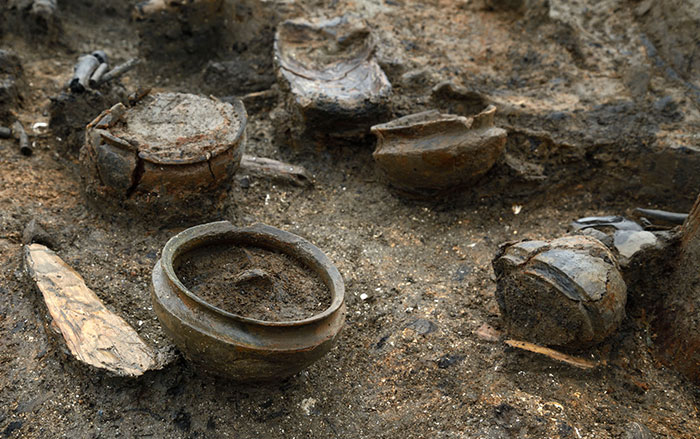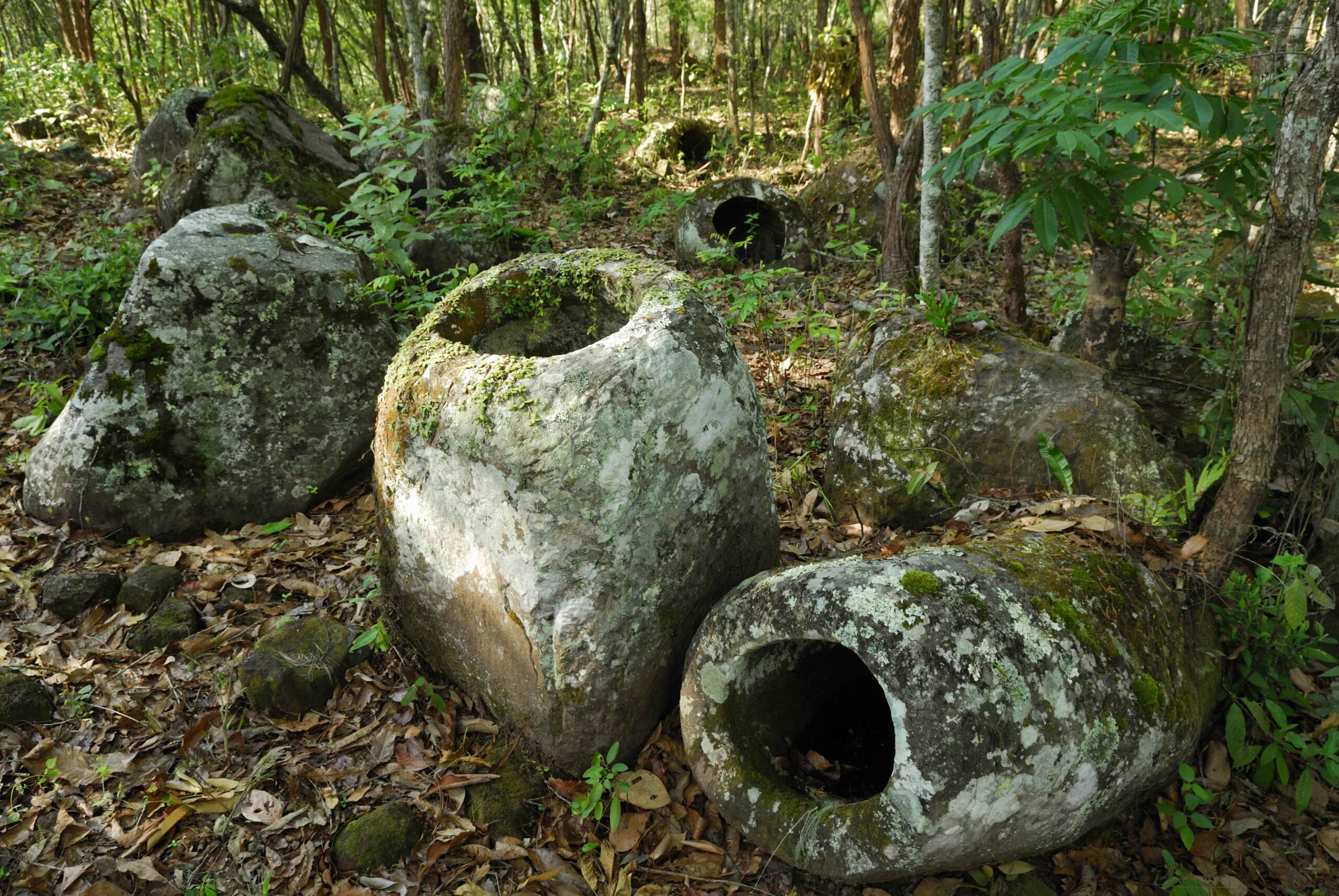The first shot of the Pacific War was not fired from a Japanese fighter, but from an American destroyer, more than an hour before the attack began. At 5:45 a.m., the cargo ship USS Antares spotted an object that might have been a submarine in the Defensive Sea Area outside Pearl Harbor. The destroyer USS Ward fired on it twice around 6:37 a.m. The second shot found its mark, and the object sank beneath Ward. On board this secret Japanese submarine, two young operators became the first casualties of the Pacific War.
Sub sightings continued throughout the attack, on both sides of the harbor entrance and even within it, where at around 8:30 a.m. the destroyer USS Monaghan rammed and sank another. Early the next morning, a small sub and a surviving crewman, Ensign Kazuo Sakamaki, washed ashore on the east side of Oahu. Sakamaki became America’s first prisoner of war, and the Navy got a close look at what they had been firing at.
The subs are known as Type A Kō-hyōteki–class subs, and it is now known that five were deployed in the attack. Just 81 feet long and 6 feet in diameter, with a crew of two and a 600-horsepower electric motor, each “midget” sub was transported, piggyback, on a larger submarine. They fanned out around 10 miles from the harbor entrance early on the morning of December 7. Their plan was to enter the harbor one by one, wait out the attack, and then fire their torpedoes that night. Though their role in the attack was lauded in Japan, they weren’t successful in this particular mission.

The fates of some of these subs have been a mystery. Sakamaki’s is now on display at the National Museum of the Pacific War in Fredericksburg, Texas. The one rammed by Monaghan was raised and buried at Pearl Harbor in 1942. In June 1960, another was found by a Navy diver at Keehi Lagoon, east of the harbor entrance. The bow was removed and dumped, and the rest sent back to Japan, where it was restored and put on display at the Naval Academy at Etajima (now the Naval History Museum). That left two: the one sunk by Ward and another that may or may not have made it into the harbor.
Concerted searches for the subs began in the 1980s. Most were conducted by the Hawaii Undersea Research Laboratory (HURL), which operates two submersibles that ferry scientists and filmmakers to the deep ocean. Before each season, the subs do a series of dives to test their equipment. Since the early 1990s, HURL’s chief submersible pilot Terry Kerby has used the dives to search for wrecks, the midget subs in particular. “If we could use those test dives in an area where we might find something,” he says, “then we would do it.” They have made dozens of finds this way, from an old Studebaker to a Japanese aircraft-carrying submarine.

In 1992, HURL found the stern section of a midget sub, followed by the midsection in 2000 and the bow in 2001. This sub was not identified at the time, but became known as the “three-piece.” In 2002, while investigating a sonar target just outside the Defensive Sea Area, HURL found another sub, intact. They saw, just where the conning tower meets the hull, the hole made by the first shot of the war. Survey showed that Ward’s shot struck a support frame and deflected downward, creating a vent hole in the bottom of the sub, which explains why it didn’t implode as it porpoised to a soft landing a mile from its fatal encounter. “It took 10 years, but we finally found it,” says Kerby. “It was in perfect condition.”
That left the three-piece. One theory about this sub is that it made it into the harbor, all the way to the backwater called West Loch, where it fired its torpedoes and set off its scuttling charge. Then, following the West Loch disaster, a massive accidental explosion in 1944, it was picked up, cut into pieces, and disposed of. A new analysis by NOAA and HURL, which returned to examine the sub in 2013, proposes an alternate explanation. The cruiser USS St. Louis reported that as it exited the harbor at the end of the attack, two torpedoes were fired at it but struck a reef. NOAA’s James Delgado and his team found a new piece of evidence to support this—a report that a 1950–1951 marine science expedition led by George Vanderbilt III stumbled across a midget sub, blown in half, near where St. Louis had been fired upon. The report, sent to LIFE magazine by an intelligence officer named Captain Roger Pineau, stated that the sub was hauled up, cut further, and dumped. The remains of a Japanese serviceman were found nearby a few days later. Delgado and his coauthors conclude that the three-piece is indeed the final sub from the attack, but that it probably never made the difficult journey into the harbor. It was likely waiting next to the harbor entrance—like the one discovered on the other side in 1960—to block it by sinking ships as they fled the attack.


